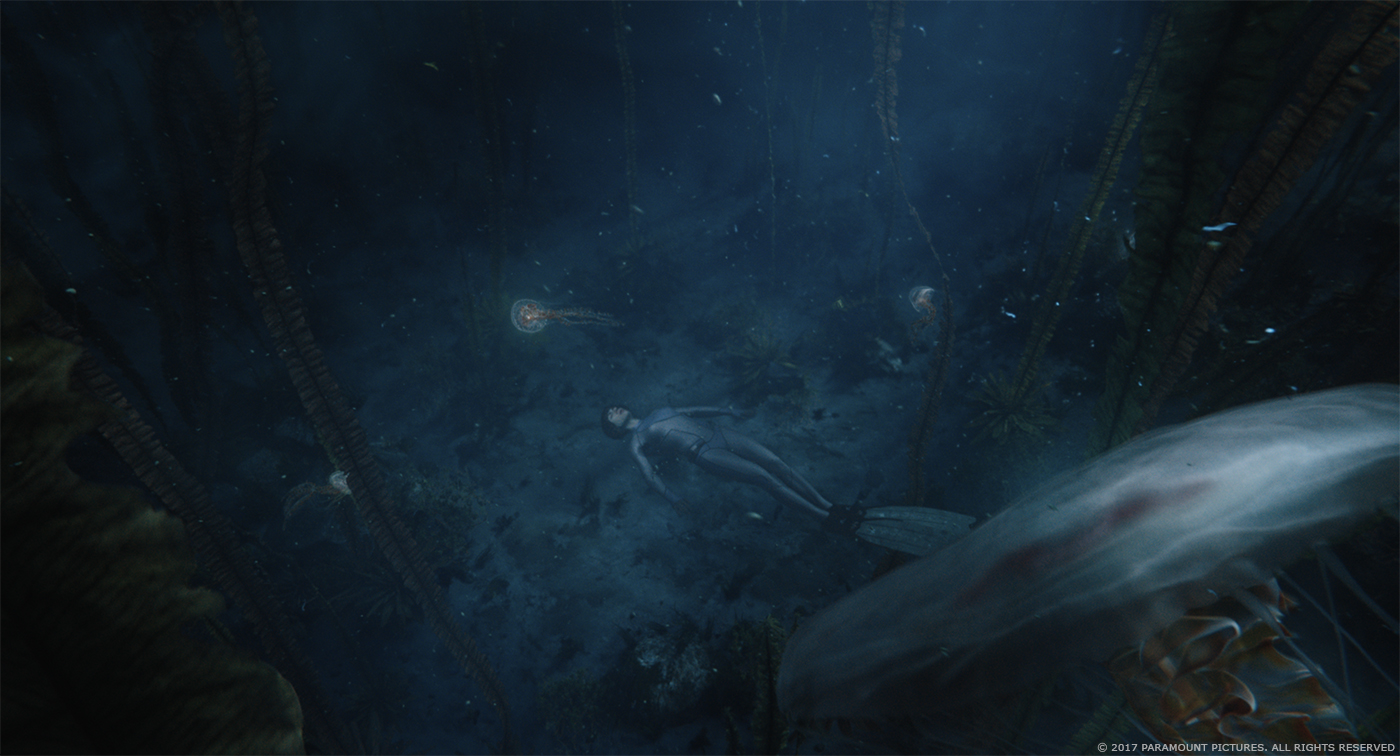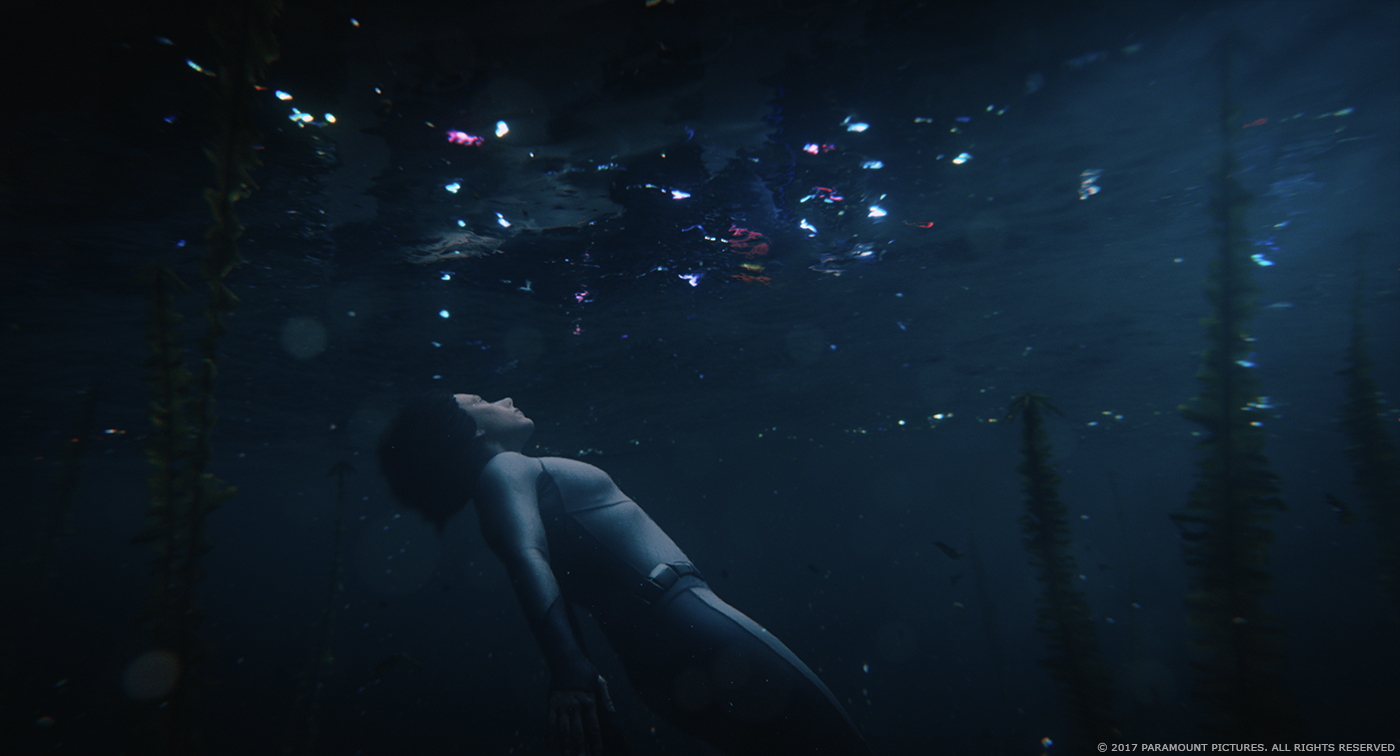Last December, Ivan Moran told us about Framestore’s work on ARRIVAL. He stays in the science fiction world and explains to us today his work on GHOST IN THE SHELL.
How did you and Framestore get involved on this show?
We worked on one standalone sequence in the movie and were commissioned towards the very end of the post production schedule.
How was your collaboration with VFX Supervisors Guillaume Rocheron, John Dykstra and VFX Producer Fiona Westgate Campbell?
We were based in multiple cities so all the calls were via cineSync. It would have been great to be face-to-face but this remote way of working and reviewing is very common nowadays and it didn’t distract from the creative dialogue between us all. Working with John and Guillaume and Fiona was collaborative and a lot of fun, I’m really excited to see the finished movie as they have been working tirelessly on it for a long time.
What was your feeling to work on the adaptation of this cult anime?
We were very excited and honoured to be part of the re-imagining of such a cool property. It was a huge challenge in a tight timeframe but extremely inspiring to work on this movie.
What are the sequences made by Framestore?
Our sequence was the underwater sequence where the Major dives down to the bottom of New Port City harbour and enters her meditative state.
Which references and indications did you received for this sequence beside the original anime?
Our sequence was definitely an homage to the original anime and we paid careful attention to reflect the same mood and ambience of that sequence as it was originally devised and portrayed. In addition we had a photograph of a jellyfish species that the director liked which we managed to trace back to a short film called ‘Endless Gravity’ by Alex Soloviev. This provided amazing moving reference for all of our creative teams to study. In addition I collected my own reference, some of which was for inspiration and some of which I discussed with John Dykstra and Guillaume Rocheron initially so we could narrow down elements of the sequence look that we thought would work best. I have done quite a lot of diving myself but I particularly loved the ‘Tales by Light’ National Geographic Channel series recently and the episode by the Australian underwater photographer, Darren Jew. Also the ‘Ocean Song’ photography series by Elena Kalis provided some wonderfully stark yet poetic inspiration. The short film ‘Ocean Gravity’ by Julie Gautier also provided some pretty epic inspiration for freediving.
Can you explain in detail about the full CG environment creation?
We created a dense kelp forest as well as floating kelp pieces over a sandy and sparsely rocky harbour seabed. This was also populated with various underwater plant species, bubbles, plankton and 13 bioluminescent jellyfish. In the first shot we begin by seeing New Port City refracted through the underside of the water surface and then tilt and sink down through the entire environment to reveal the Major being carried along by a gentle underwater current. We ran an overlength underwater simulation on all of the kelp and underwater plants that would cover all of the shots. In addition some pieces of kelp had bespoke simulation to react to jellyfish swimming by and the Major’s flipper kicks as she swam back to the surface.
How did you created the digi-double of the Major?
We received a model from MPC for the Major and then adjusted this based on set photography of her stunt double to create the underwater suit and flippers she wears. There was also shot footage of the stunt double underwater and Scarlett herself so we were able to use this to precisely match the underwater look of the suit and her face and hair. In one shot we did an extremely complex face replacement using a facial performance from Scarlett shot on greenscreen that was mapped onto a corresponding digi double performance for the suit and her hair simmed to move like it was underwater. All of the micro facial and neck movement from the greenscreen performance had to be matched exactly so our CG suit would warp and move correctly around her neck and so her hair would be rooted correctly.
Can you tell us more about their rigging and animation?
As is the case with all of our photorealistic creatures, the performance of the jellyfish was a team effort between Animation, Rigging and CreatureFX. Animation worked with Rigging to ensure the jellyfish rig provided all the necessary features to move, twist and curl the jellyfish in interesting ways as well as deform the different parts of the creature as it moved through the water. Because a jellyfish has such organic motion, the CreatureFX team was relied upon to simulate the tentacles and body to provide an extra layer of realism and quality. Multiple passes of animation and simulation were created until we felt we had a believable and dynamic performance.
How did you manage the underwater lighting challenge of this sequence?
Diving that far underwater at night would of course mean everything would be pitch black so we had to devise some conceits for the lighting of the sequence. The first was a soft moonlight from above which gave a beautifully soft and subtle illumination to the scene and the Major. The main lighting device was the bioluminescent themselves which could softly illuminate the water plankton and kelp around them as well as the Major as they swam past her.
Can you tell us more about the FX simulations work?
We chose to simulate the kelp and plants as one long library clip that we could choose sections of for each shot. That way we didn’t continually have to keep re-simulating the entire environment every time. There were a lot of bespoke simulations per shot as well though of course from slowly swirling plankton filling the entire environment, interactions between kelp and jellyfish and the Major, the Major’s hair, her flippers and suit wrinkles, the water surface and of course highly complex simulations for all of the secondary motion for the jellyfish tentacles, bell and inner organs.
What was the main challenge on this show and how did you achieve it?
Definitely the jellyfish. It is the first time we have created that kind of creature to that level at Framestore before and I relished the challenge. It was the first time the traditional model-rig-move-light-render-comp linear flow we are so used to was turned a little upside down for this creature. We did a lot of very complicated refraction shading, tracing each jellyfish against another along with the environment and the Major and had to keep continually going back to adjust modelling to get the right look of the internal organs and structure we were after to match the reference. Equally the animation and CFX, how much of the bell propulsion and tentacle movement is animation driven vs secondary motion? That aspect evolved a lot as well. Really cool stuff though, they look great!
What do you keep from this experience?
Great memories and beautiful pictures. I really enjoyed working with the film-makers on this project and huge thanks to my amazingly talented crew.
How long have you worked on this show?
It was exactly 10 weeks, right around Christmas, just to make it that much harder 🙂
What’s the VFX shots count?
We delivered 7 shots for the sequence but each one was incredibly complicated.
What was the size of your team?
40 extremely talented superstars!
What is your next project?
Ahhhh, look over there! I’m dabbling in a few exciting things at the moment but its a bit early to say. Watch this space.
A big thanks for your time.
// WANT TO KNOW MORE?
Framestore: Dedicated page about GHOST IN THE SHELL on Framestore website.
© Vincent Frei – The Art of VFX – 2017












